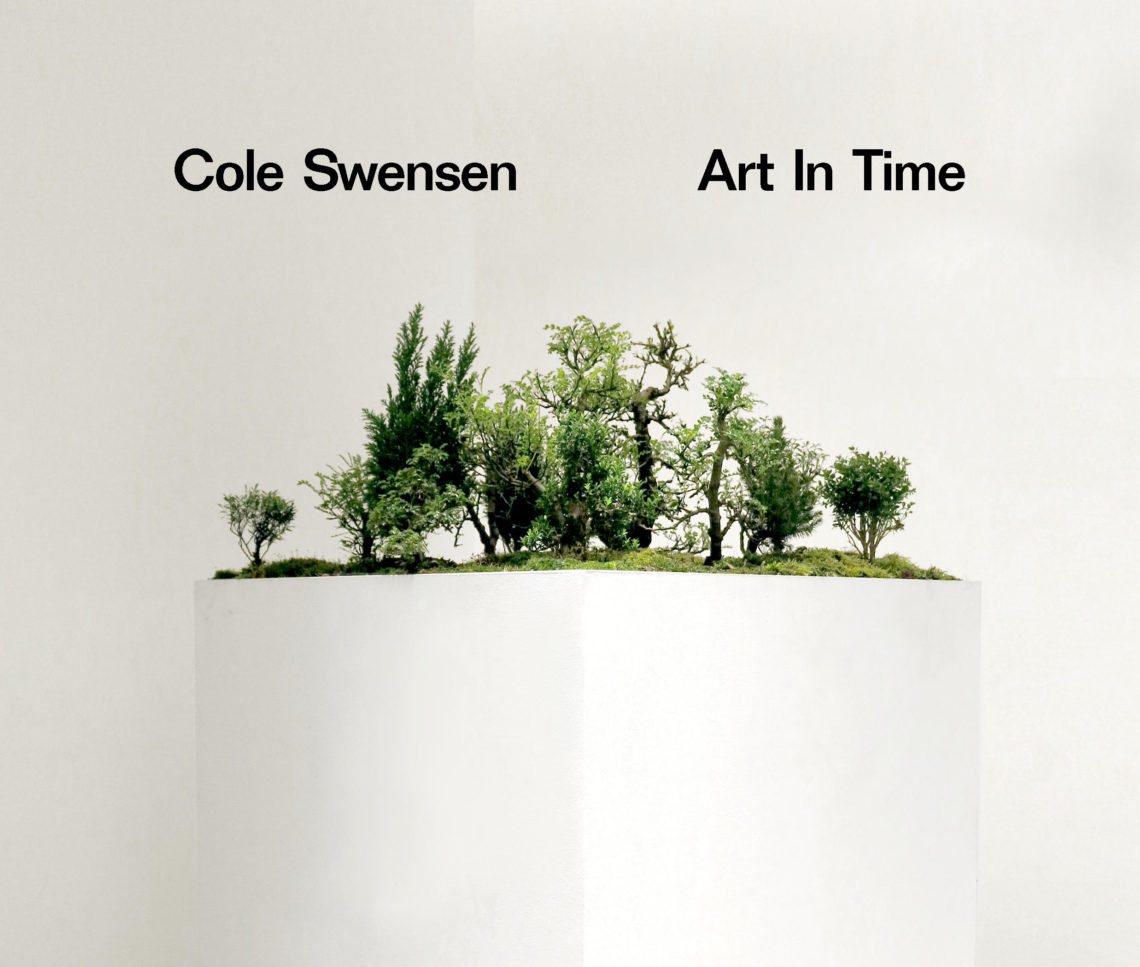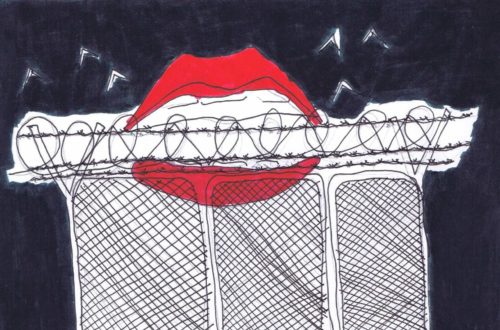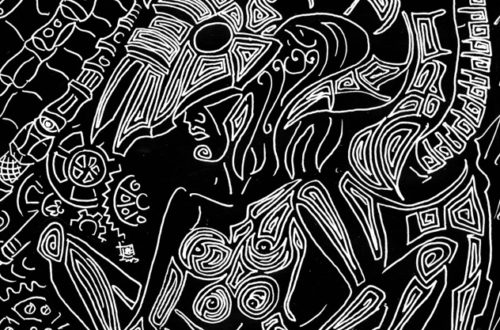
Lasting Art: A Review of Cole Swensen’s Art in Time
Art in Time is a book that resists the idea of it ever becoming a “timeless work of art.” For poet,
translator, and academic Cole Swensen, the very notion of a “timeless work of art” not only implies a
refusal to engage with the present moment, but also exposes a fundamental problem in our viewership:
our tendency of looking at rather than from within. In this collection of lyric essays, Swensen studies
the work of twenty artists, all of whom have “found ways through landscape to become an active
element in the view and its viewing.”
The book itself remains neatly tied to its own present moment. Prior to reading Art in Time
I’m ashamed to admit I didn’t know Agnes Varda from Agnes Martin, but Swensen reminds us at the
end of her thoughtful introduction, “All the works referenced can easily be found on the Internet.”
One of the great pleasures of reading this book is to find yourself awash in dozens of internet tabs:
the watercolors of Andre des Gachons, the drifting cubists screens of David Hockney, the deer caught
in the headlights of George Shiras’s nighttime photographic flashes.
“The term ‘peinture animalière’ was invented by Théophile Gautier in 1855, effectively
inaugurating a genre spliced between portrait and landscape,” Swensen remarks in the book’s second
essay, “Rosa Bonheur: Animals with Landscape.” Of course, Art in Time itself straddles these two
genres. Each essay is a revealing portrait of an artist in the act of creation, engaging with the landscape,
or both. Its blend of art criticism, biography, and eco poetics makes for an accessible and inventive
hybrid work, but it is the delicate way in which Swensen hints at a deeper connection that makes Art
in Time such a valuable collection. The careful reader will notice the subtle parallels that appear between
these artists. Some are fascinated by darkness (George Shiras and Henry Ossawa Tanner); for others,
it is the sea that moves them (Zineb Sedira and Tacita Dean). Even artistic tools seem more similar in
their veneration than they are dissimilar in their mediums (Des Gachons’s watercolors, Renee Gladman’s pencils, and Irvin Petlin’s pastels). One can even notice the subtle connections between
the tertiary and major players of various movements (Klimt’s companion Emilie Flöge leading the
Dress Reform Movement, and Rosa Bonheur’s trousers—which, for women to wear at the time,
required the permission of police).
And yet, for all its research, insights, and discerning contributions of art criticism, Swensen’s
own poetry is never compromised. That is, despite everything I learned about these twenty artists,
Swensen’s language posses a certain poetic and ephemeral quality: the strange sense of understanding
exactly what are you reading as you read it, but somehow being left unable to summarize it. Of course,
this is not only due to Swensen’s lyrical style, but the fact that Art in Time is a book that is not “about”
any one thing. Much like her own analysis of Des Gaschon, Swensen paints “scene after scene that
means nothing but itself.”
Throughout Art in Time, Swensen demonstrates how art can in effect change us. One of the
most revealing portraits in the book is that of landscape architect Frederick Law Olmsted, whose most
famous commission was New York City’s Central Park. “He also invented the parkway,” Swensen
remarks, “seeing the park not only as a place to go, but also as a way of getting there.” In this section,
Swensen demonstrates that, contrary to certain public opinions, there is lasting value and utility in
artistic vision. Consider the park: a microcosm of “egalitarian democracy” where people from all walks
of life can gather. “[Central Park] opened on December 11, 1858, with ice-skating, which instantly
became all the rage—/ There, on that slipperiest of surfaces, all classes literally slid in and out of each
other.”
Swensen deftly follows this section (and ends the book) with a moving study on Jeanne-Claude
and Cristo’s ambitious installation Running Fence, a veiled fence nearly twenty-five miles long that
extended through the hills of Northern California. The project, which hung for only fourteen days
and left behind no visible trace, took over four years to complete, required multiple public hearings, court dates, and the cooperation fifty-nine ranchers, as it extended through private and public property
across two counties. While an installation like this, with “elaborate ephemerality at its core,” connotes
an onslaught of questions regarding its use, function, and value, Swensen reminds us that the millions
of dollars spent on the Running Fence “were earned by someone—engineers, manufacturers, planners,
measurers, cutters, sewers, builders, drivers, monitors, photographers, and ranchers who all
contributed to its creation—and a good many of them were local; it created a small economic boom
in the region.” The Running Fence is therefore not only the fence itself, but its construction,
deconstruction, and the indelible effects on its environment despite its physical ephemerality—take
for example the initially resistant, and relatively conservative, ranchers who “soon became outspoken
advocates of avant-garde art.”
“The Fence is the gesture that changes the site from land into landscape; by placing a work of
art in it, it’s suddenly apparent,” Swensen writes. This can be said not only of the works of the nineteen
other artists in Art in Time, but also of Swensen’s own work. After reading Art in Time, you might find
yourself considering art and landscape in new ways—a walk beneath blooming cherry blossoms in a
park or the graffiti along a city avenue are suddenly made urgent by the conditions of their time and
place. Watercolors as way of painting with weather, mirrors as way of disrupting rather than reflecting
the landscape. Art as a way of seeing. And the power of a book that is not timeless, but lasting.
*
Cole Swensen was born and raised near San Francisco and earned her BA and MA from San Francisco State University and a PhD from the University of California Santa Cruz. She is currently a professor in the literary arts program at Brown University and founder and editor of La Presse, a small press dedicated to the translation and publication in English of contemporary French poetry. She is the author of thirteen collections of poetry and has translated ten books of poetry into English from French. Her newest book, Art in Time, is out now.




